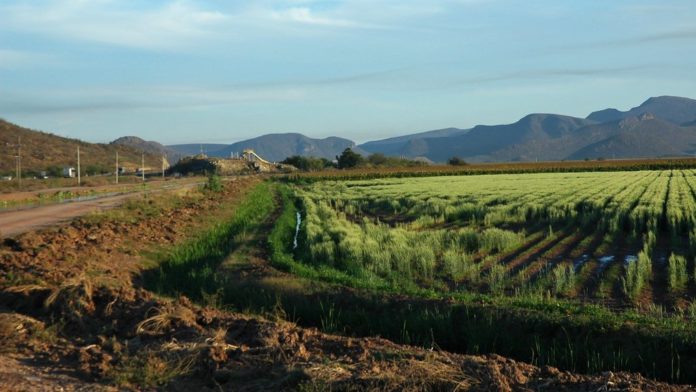As the planet heats up due to climate change, some high-altitude and polar areas will become available for agriculture, especially in countries like Russia and Canada. According to new research, Earth’s total agricultural landmass could expand by up to a third within the next 50-100 years.
This may be a boon to farmers and Canadians in general as we could grow more food and import less, but there’s a catch: there could be major consequences, including the pollution of downstream water supplies, threats to biodiversity, and increased carbon emissions.
“Canada is actually holding a good card when it comes to climate change, and one of the potentially positive changes is a longer growing season in our backyard,” said co-author Evan Fraser to the National Post. “There is an interesting opportunity to generate food in a world that needs more…[but] there are some very serious environmental consequences.”
Delicate ecosystems may crumble following disturbance
Several of Earth’s high-altitude and high-latitude zones are becoming more and more able to support agricultural activity. High-altitude flora is typically composed of shrubs, grass, and other small plants that can sustain the bitter cold and exposure to ultraviolet light. The conditions are currently too harsh for farming, but this is expected to change as the planet warms up.
Tundra regions, which are treeless plains in the Arctic and on mountaintops, are experiencing a similar phenomenon. As a result of the changing climate, snow in tundra biomes are melting earlier in the spring. This is already providing favourable conditions for more bountiful vegetation.
These new ‘agricultural frontiers’ present greater opportunities, but we are fairly ignorant about what large-scale human activity could do to these ecosystems. They can be fragile, vulnerable to the mildest of interferences upsetting their delicate balance.
Food chains may be disrupted, invasive species could thrive, and endangered creatures may be pushed out. Worse still, vast amounts of carbon stored in the soil could end up being released into the atmosphere, exacerbating an already monumental problem.
Potential for further 4.2 million km² of farmland in Canada
The researchers created a global modelling analysis of climate change-driven crop sustainability and the resulting environmental consequences to clarify the risks and benefits. The hope is that decision-makers may be able to use their work in the future to understand the situation before a scrap of soil is lifted.
Temperature and precipitation predictions sourced from 17 global climate models were combined with agricultural models that determine the suitability of 12 major global crops (e.g. corn, sugar, and, cotton) to create the model.
Northern boreal regions, which are prolific in both Canada and Russia, were found to have the greatest potential for expanded farmland. In Canada, it would amount to around 4.2 million km², and four cold-tolerant crops (wheat, potatoes, corn, and soy) would survive under the conditions.
The potential risks are that up to 1.8 billion people’s downstream water supplies could be affected by these endeavours. Further, the new agricultural frontiers would intersect with 19 global biodiversity hotspots which include 20% of all the world’s restricted bird ranges.
As for carbon emissions, disturbing the top metre of frontier soils may result in 117 billion tonnes of CO2 being released globally. This would have grave implications for Canada’s ability to meet its commitments to the Paris accord.
The authors noted that more research needs to be done to fully understand the effects of these potential moves on a global scale. Detailed, thorough analyses may ultimately lead to a more responsible use of new agricultural frontiers so that the worst of these effects are contained.
“In a warming world, there will be new opportunities and challenges in the north,” say the authors. “This work highlights how we must approach the idea of developing new farmland very cautiously and be extremely mindful of potential negative environmental impacts.”








































